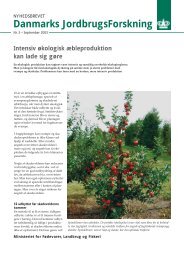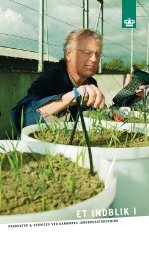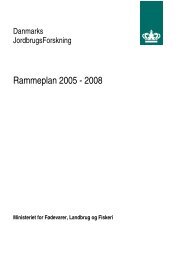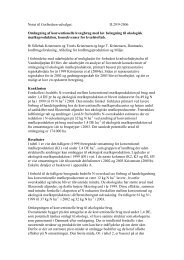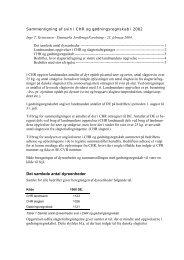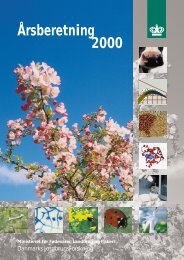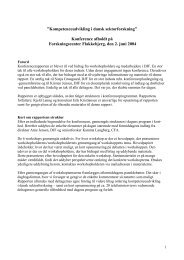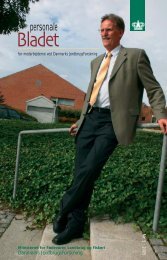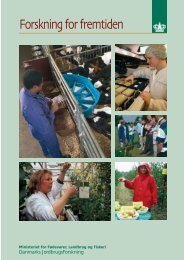Reproduction performances and conditions of group-housed non ...
Reproduction performances and conditions of group-housed non ...
Reproduction performances and conditions of group-housed non ...
Create successful ePaper yourself
Turn your PDF publications into a flip-book with our unique Google optimized e-Paper software.
- Paper IV -<br />
Abstract<br />
Group housing <strong>of</strong> <strong>non</strong>-lactating sows is becoming more <strong>and</strong> more widespread in commercial<br />
sow herds in several European countries as a result <strong>of</strong> changed legislations. Results<br />
from experimental studies suggest that <strong>group</strong> housing may lead to individual variation in<br />
feed intake, stress <strong>and</strong> fear, which may impair the reproduction performance. However,<br />
whether the individual variation in feed intake, stress <strong>and</strong> fear in sows <strong>group</strong> <strong>housed</strong> under<br />
commercial <strong>conditions</strong> is severe enough to impair the reproduction performance is not<br />
known. Therefore a detailed farm study including 14 herds (in total about 550 sows) with<br />
different layouts <strong>and</strong> management routines was carried out, <strong>and</strong> the relations between various<br />
indicators <strong>of</strong> feed intake, stress <strong>and</strong> fear <strong>and</strong> reproduction performance were studied.<br />
11.4 % <strong>of</strong> all mated sows were re-mated <strong>and</strong> average litter size was 14.8 born piglets per<br />
litter. Positive correlations between back fat gain from weaning to three weeks after mating<br />
<strong>and</strong> chance <strong>of</strong> pregnancy (P




